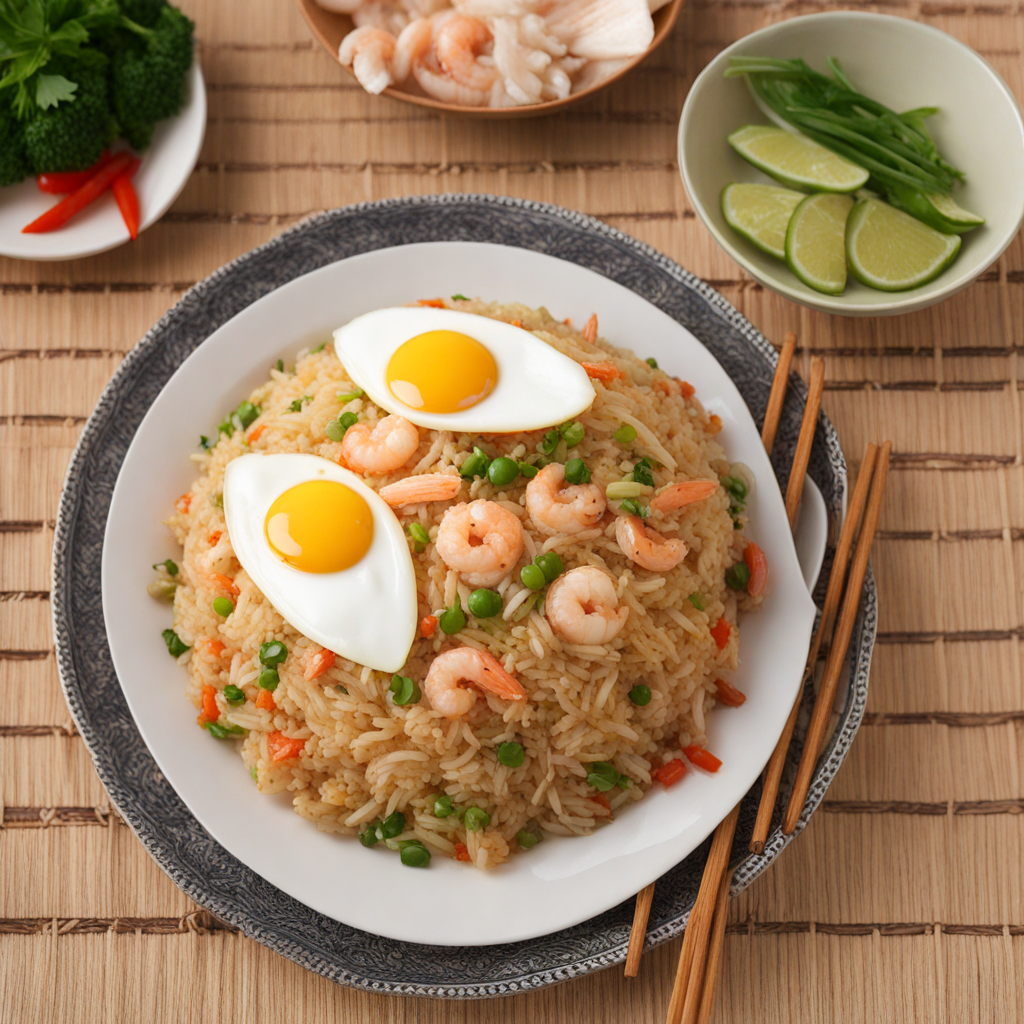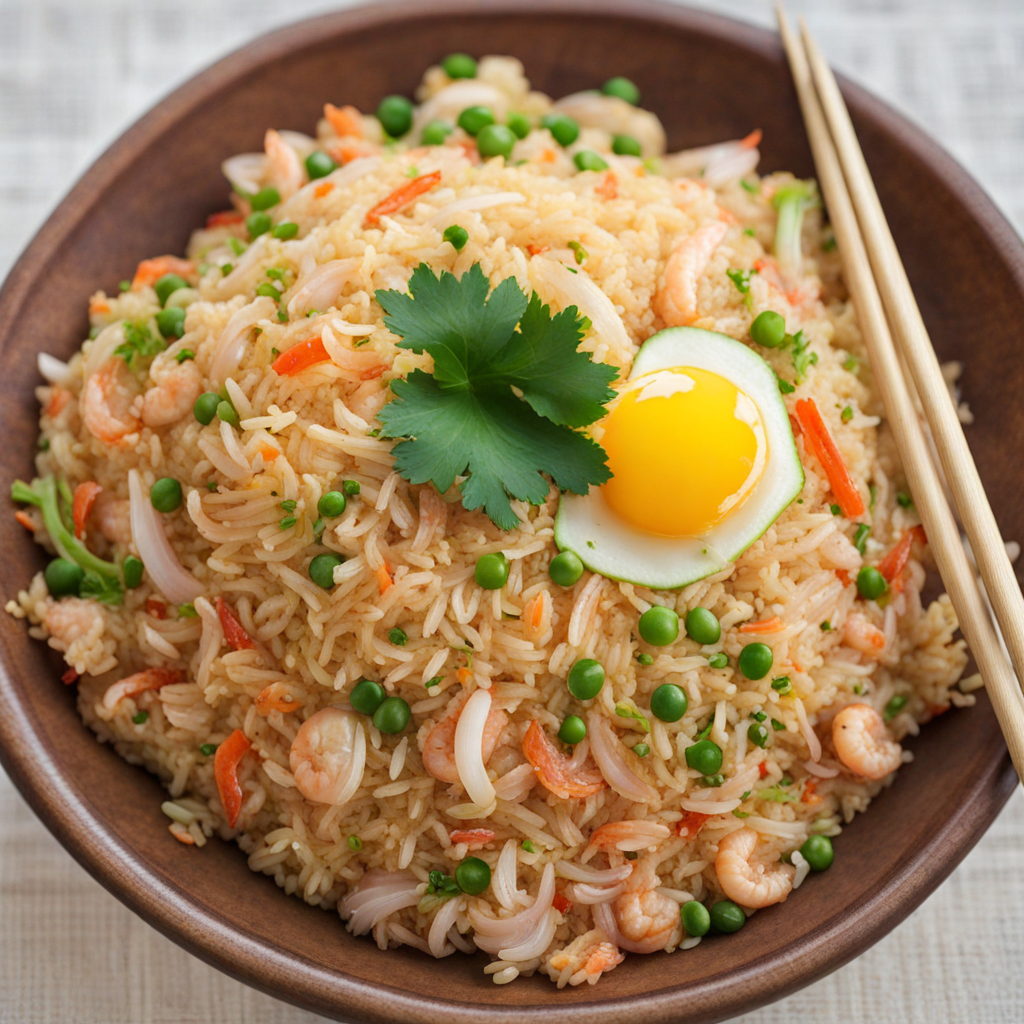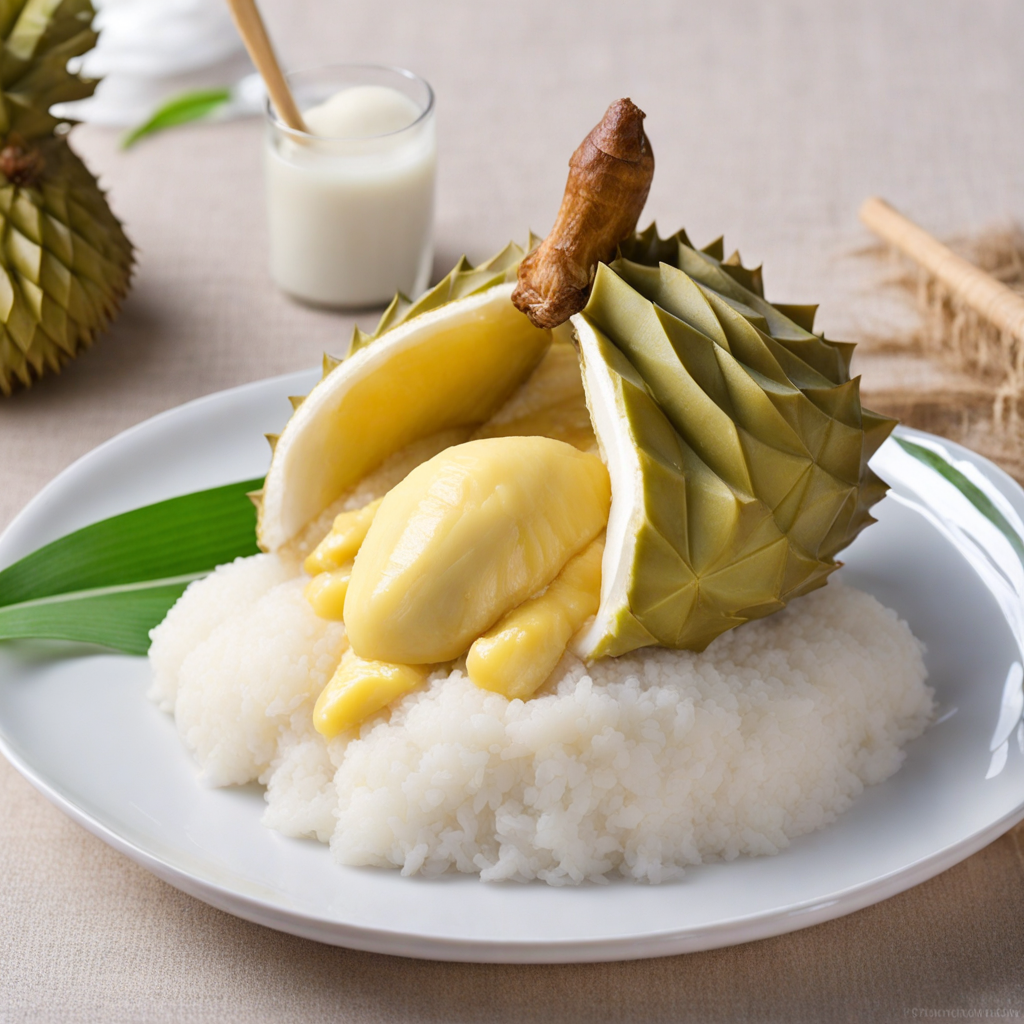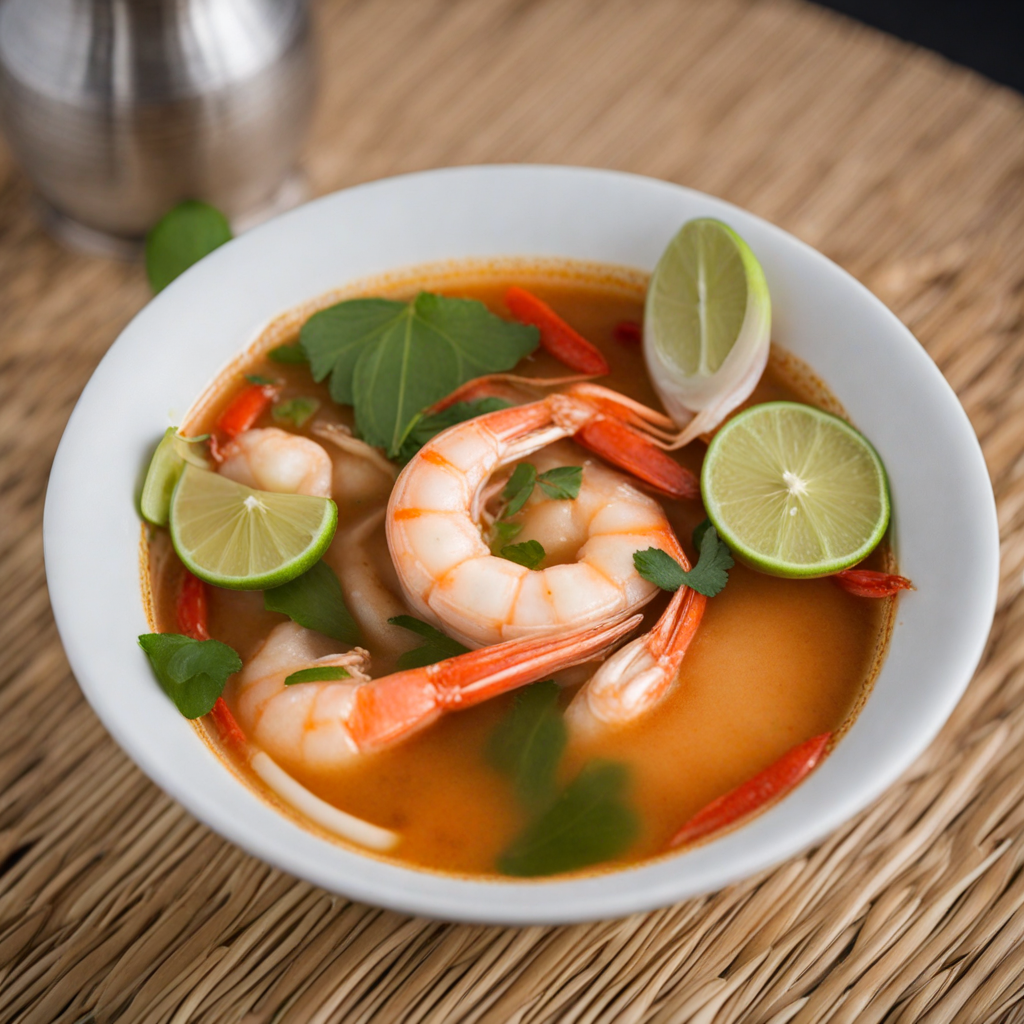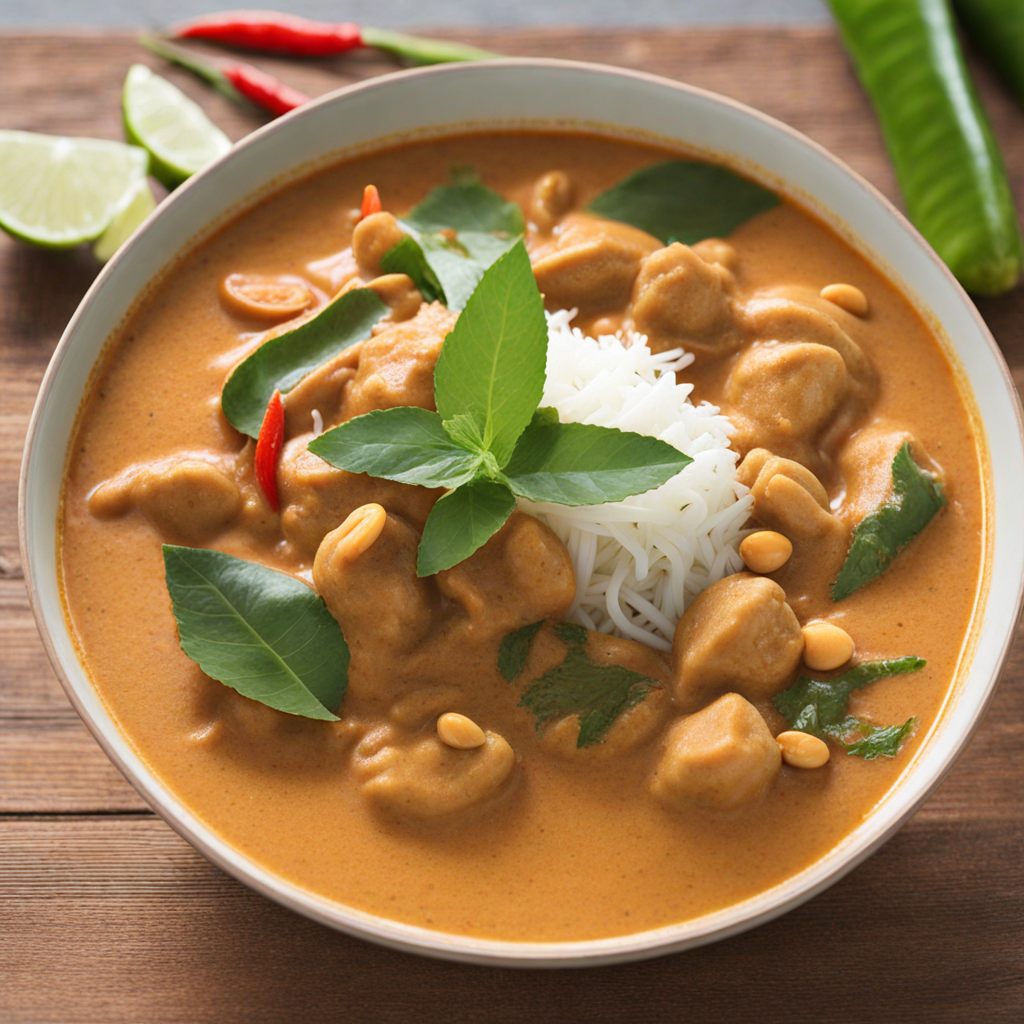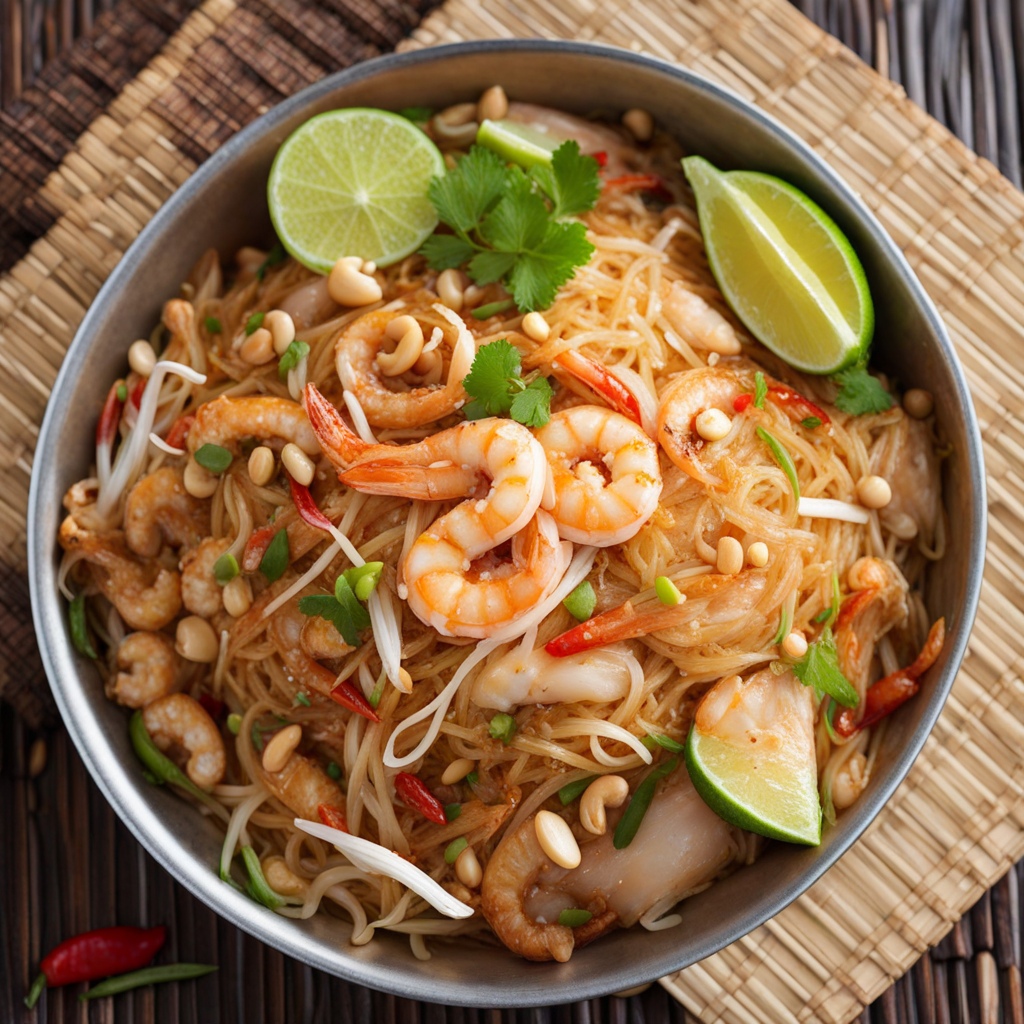Thai Fried Rice
Thai Fried Rice, known as "Khao Pad," is a vibrant and aromatic dish that showcases the rich culinary traditions of Thailand. This flavorful fried rice is typically made with jasmine rice, which provides a fragrant and slightly sticky texture. The dish is often stir-fried with a variety of fresh ingredients, including vegetables like carrots, peas, and bell peppers, adding a colorful crunch to every bite. The use of garlic and shallots imparts a savory depth, while proteins such as chicken, shrimp, or tofu elevate the dish, making it satisfying and hearty. The hallmark of Thai Fried Rice is its balance of flavors, achieved through the addition of soy sauce and the unique tang of fish sauce. A touch of oyster sauce may also be included, bringing a rich umami note. Fresh herbs like cilantro and green onions are often sprinkled on top, enhancing the freshness and aroma. The dish is sometimes garnished with lime wedges, allowing diners to squeeze a burst of citrus over the rice, which brightens the overall flavor profile and adds a zesty finish. Thai Fried Rice is not just a meal; it’s an experience that captures the essence of Thai cuisine. The combination of sweet, salty, and savory elements, along with the aromatic herbs and spices, creates a delightful dish that is both comforting and exciting. Whether enjoyed as a quick street food option or a homemade family meal, each serving of Khao Pad delivers a taste of Thailand that is sure to leave a lasting impression on anyone eager to explore new culinary horizons.
How It Became This Dish
The History of ข้าวผัด (Khao Pad): A Culinary Journey Through Thailand #### Origins of Khao Pad Khao Pad, or Thai fried rice, is a beloved dish that embodies the essence of Thai cuisine—flavorful, aromatic, and vibrant. The dish consists primarily of rice, typically jasmine rice, stir-fried with a variety of ingredients including vegetables, proteins, and spices. Its origins can be traced back to the broader Asian tradition of fried rice, which is thought to have emerged around 4,000 years ago during the Han Dynasty in China. The practice of stir-frying rice became a practical way to use leftover rice and ingredients, transforming them into delicious meals. As trade flourished between China and Southeast Asia, culinary techniques and ingredients began to blend, leading to the development of regional variations of fried rice. In Thailand, the dish evolved uniquely, influenced by local ingredients and cooking styles, as well as by the country's rich history of trade with various cultures, including Indian, Malay, and Portuguese influences. #### Cultural Significance Khao Pad holds a significant place in Thai culture, representing the adaptability and resourcefulness of Thai cooking. It is often considered a comfort food, enjoyed by people of all ages and backgrounds. The dish reflects the Thai philosophy of balancing flavors—sweet, salty, sour, and spicy—creating a harmonious culinary experience. In Thailand, rice is a staple food, integral to daily life and rituals. Khao Pad is often served as a quick meal or street food, embodying the fast-paced lifestyle of urban Thais. Vendors can be found in bustling markets and street corners, expertly tossing ingredients in woks over high flames, creating an aromatic spectacle that draws in hungry passersby. The dish is a staple at family gatherings, celebrations, and casual meals, symbolizing togetherness and community. #### Development Over Time The evolution of Khao Pad can be traced through several key historical and cultural milestones. During the Ayutthaya period (1351-1767), Thailand began to see significant Chinese influence, particularly in the culinary realm. It was during this time that the concept of stir-frying rice took root, and Khao Pad began to emerge as a distinct dish. The introduction of new ingredients such as soy sauce, garlic, and shallots further enhanced the flavor profile of the dish. In the late 19th and early 20th centuries, during the reign of King Rama V, Thailand underwent modernization and Westernization, which influenced its cuisine. The introduction of new cooking techniques and ingredients, including canned goods and processed foods, allowed for further experimentation with Khao Pad. Street vendors began to innovate, introducing various styles of Khao Pad, such as Khao Pad Moo (fried rice with pork) and Khao Pad Gai (fried rice with chicken), each reflecting local tastes and preferences. By the mid-20th century, Khao Pad had solidified its place in Thai cuisine, becoming a staple dish in households and restaurants alike. The rise of tourism in Thailand during this period also played a crucial role in popularizing Khao Pad beyond the country's borders. International visitors were introduced to Thai flavors, leading to a surge in interest in Thai cuisine worldwide. Consequently, Khao Pad became a representative dish of Thai culinary heritage, often featured in Thai restaurants across the globe. #### Variations and Regional Styles As Khao Pad gained popularity, numerous regional variations emerged, showcasing the diversity of Thai cooking. For instance, in southern Thailand, Khao Pad Sapparot (pineapple fried rice) is a popular variation, incorporating sweet pineapple chunks, raisins, and cashews, reflecting the region's tropical fruits. In contrast, northeastern Thailand (Isaan) offers a spicier take on the dish, often including local herbs and spices like lemongrass and chili. The use of different proteins also distinguishes various styles of Khao Pad. While chicken and pork are common choices, seafood varieties such as Khao Pad Talay (seafood fried rice) showcase the coastal influences of Thailand's maritime regions. Vegetarian versions of Khao Pad have also gained popularity, catering to a growing demand for plant-based dishes. One notable aspect of Khao Pad is its versatility. The dish can be customized based on personal preferences and available ingredients, making it a canvas for creativity in the kitchen. This adaptability has contributed to its enduring popularity among Thais and food enthusiasts alike. #### Modern Trends and Globalization In the 21st century, Khao Pad continues to evolve, influenced by globalization and contemporary food trends. Chefs and home cooks alike experiment with fusion variations, incorporating international flavors and techniques. For instance, some have introduced elements from Italian cuisine, such as using risotto-style rice or incorporating pesto, while others explore healthier options using quinoa or brown rice. The rise of social media has also played a significant role in showcasing Khao Pad to a broader audience. Food bloggers and influencers share vibrant images and recipes, inspiring a new generation of cooks to embrace Thai cuisine and experiment with Khao Pad. Online platforms enable the sharing of regional variations, encouraging culinary exchange and appreciation for the dish’s rich heritage. Conclusion Khao Pad is more than just a dish; it is a reflection of Thailand's culinary journey, influenced by history, culture, and the interplay of flavors. From its humble origins as a practical solution to leftover rice to its status as a beloved comfort food, Khao Pad represents the adaptability and creativity of Thai cuisine. As it continues to evolve in response to modern tastes and global influences, Khao Pad remains a quintessential symbol of Thai heritage, cherished by locals and food enthusiasts around the world. Whether enjoyed from a street vendor or a fine dining restaurant, Khao Pad captures the heart and soul of Thailand, inviting people to partake in its rich culinary legacy.
You may like
Discover local flavors from Thailand


